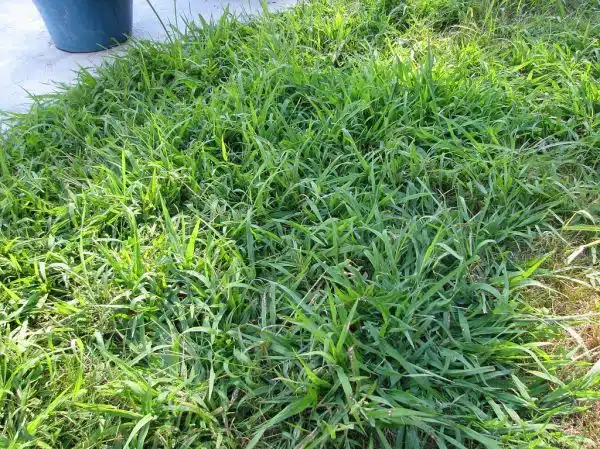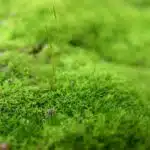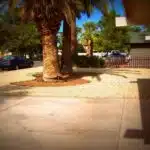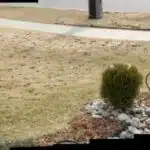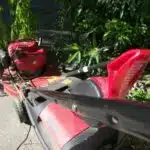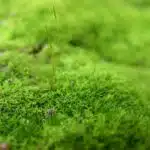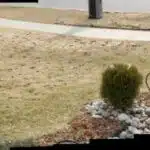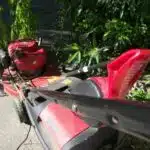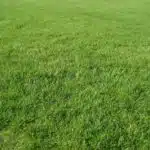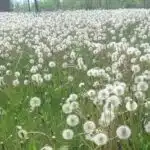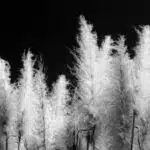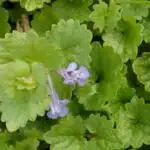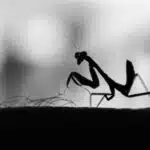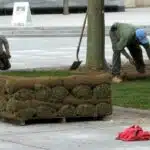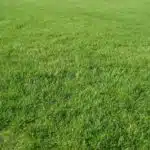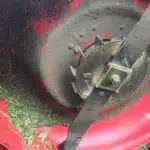As a landscaping and lawn care expert, I know that one of the most frustrating weeds to deal with is crabgrass. This invasive species can quickly take over your lawn, leaving it looking patchy and unhealthy. However, with the right tools and techniques, it is possible to kill crabgrass and restore your lawn to its former glory.
In this article, we will discuss the various methods for killing crabgrass, including both chemical and natural options. We will also cover preventative measures you can take to stop crabgrass from invading your lawn in the first place. Ultimately, our goal is to equip you with the knowledge and tools necessary to serve yourself by creating a healthy and beautiful lawn free of pesky crabgrass.
Understanding Crabgrass And Its Impact On Your Lawn
Crabgrass is a common weed that can quickly invade your lawn and ruin its appearance. It is an annual grassy weed that thrives in warm weather and poor soil conditions. Crabgrass prevention should be a part of your lawn maintenance routine to keep it from growing out of control.
One of the biggest impacts of crabgrass on your lawn is the unsightly appearance it creates. The clumpy growth pattern of this weed can make your lawn look patchy and uneven. Additionally, crabgrass can steal vital nutrients from your grass, making it difficult for your lawn to stay healthy.
To prevent crabgrass from taking over your lawn, there are several measures you can take. For example, you should mow regularly and keep the blades sharp to avoid damaging the grass. You should also water deeply but infrequently to encourage deep root growth in your grass, which makes it more resistant to weeds like crabgrass. Additionally, you should fertilize strategically to promote healthy grass growth without giving crabgrass an advantage. By implementing these measures into your lawn maintenance routine, you can reduce the risk of a crabgrass invasion in your yard.
Identifying crabgrass and its life cycle is crucial for effective management of this weed problem.
Identifying Crabgrass And Its Life Cycle
Careful consideration and constant observation are key to identifying crabgrass and understanding its life cycle. As a landscaping and lawn care expert, it is essential to be aware of the damaging effects that crabgrass can have on your lawn. Early detection is crucial as it will help you prevent its spread.
Crabgrass is an annual weed that thrives in warm weather with high humidity. It germinates from seeds in the spring when the soil temperature reaches around 55 degrees Fahrenheit. Crabgrass has a broad leaf blade, a shallow root system, and grows horizontally along the ground. The plant produces many seeds that allow it to re-establish itself year after year.
Preventing crabgrass growth is easier than trying to eliminate it once established. Crabgrass prevention involves ensuring that your lawn remains healthy and dense, as this reduces the likelihood of weeds taking root. Regular mowing, watering, and fertilizing are some of the ways you can keep your lawn healthy. In addition, applying pre-emergent herbicides before the soil temperature reaches 55 degrees Fahrenheit can prevent crabgrass seeds from germinating.
Next, we will delve into the pros and cons of chemical crabgrass killers. While preventing crabgrass growth is preferable, there may be times when chemical solutions are necessary to control an infestation. It’s important to understand what these products do and their potential environmental impacts before making a decision about their use on your lawn.
The Pros And Cons Of Chemical Crabgrass Killers
Chemical crabgrass killers are a popular option for many homeowners due to their effectiveness in quickly eliminating the pesky weed. These products typically contain herbicides such as glyphosate or quinclorac, which work by disrupting the crabgrass’s growth and ultimately killing it. However, while chemical options may produce fast results, they also come with a number of drawbacks that should be carefully considered.
One major concern with chemical crabgrass killers is their potential environmental impact. Many of these herbicides can leach into nearby soil or water sources, causing harm to plants and animals in the surrounding ecosystem. Additionally, some chemicals have been linked to health problems in humans, making them a risky choice for those with pets or young children who may come into contact with treated areas.
Another factor to consider is effectiveness over time. While chemical crabgrass killers may initially eliminate existing weeds, they do not prevent new ones from sprouting up later on. In fact, some studies have shown that repeated use of herbicides can actually lead to the development of resistant strains of crabgrass that are even harder to eradicate down the line.
In summary, while chemical crabgrass killers may provide quick results in eliminating unwanted weeds, they also come with serious concerns about their environmental impact and long-term effectiveness. Homeowners should carefully weigh these factors before deciding whether or not to use these products for their lawn care needs.
Natural Alternatives For Killing Crabgrass
Organic remedies and DIY solutions can be effective in killing crabgrass. These alternatives are environmentally friendly and do not contain harmful chemicals that could damage the soil or surrounding plants. One simple solution is to manually remove the weeds by digging them up with a garden tool or pulling them out by hand. This method may take some time but is an effective way to control crabgrass growth.
Another natural remedy is to use corn gluten meal, which is a byproduct of corn processing. It works as a pre-emergent herbicide, preventing crabgrass seeds from germinating. Corn gluten meal should be applied in early spring before the weed has a chance to grow. Mix it with water and spray it onto your lawn, making sure to follow the instructions on the package for proper application.
A third option is using baking soda or vinegar as an organic weed killer. Baking soda works by drying out the leaves of the plant, while vinegar kills weeds by burning their foliage. To use these remedies, mix them with water and spray them directly onto the crabgrass. However, keep in mind that these solutions may also harm surrounding plants if not applied carefully.
By utilizing these organic remedies and DIY solutions, homeowners can naturally control crabgrass growth without resorting to harmful chemicals. In the next section, we will discuss pre-emergent herbicides for preventing crabgrass growth – another important step in achieving a healthy lawn without weeds.
Pre-Emergent Herbicides For Preventing Crabgrass Growth
In order to effectively prevent the growth of crabgrass, pre-emergent herbicides can be used. These herbicides work by preventing the crabgrass seeds from germinating and taking root in your lawn. There are many different types of pre-emergent herbicides available on the market, each with their own unique benefits.
One type of pre-emergent herbicide is dithiopyr, which is effective against a wide range of weeds including crabgrass. This herbicide is typically applied in early spring before the crabgrass has a chance to grow. Another popular option is prodiamine, which can be effective for up to 8 months after application. This herbicide should be applied in late winter or early spring for best results.
When applying pre-emergent herbicides, it’s important to follow proper application techniques to ensure that they are effective. First, it’s important to apply the herbicide evenly across your lawn using a spreader. You should also make sure that you water your lawn immediately after applying the herbicide to activate it and help it penetrate into the soil.
In order to maintain optimal lawn health and prevent weed growth, soil testing may also be necessary. By testing your soil for nutrient deficiencies and pH levels, you can determine the best course of action for fertilization and other lawn care practices. With proper care and maintenance, you can keep your lawn healthy and free from unsightly weeds like crabgrass.
Soil Testing For Optimal Lawn Health
Did you know that over 60% of lawn problems can be attributed to poor soil quality? It’s true! That’s why soil testing is critical to achieving optimal lawn health. By testing your soil, you’ll know exactly what nutrients are present and what pH levels you’re working with, which will help guide your fertilization schedule and ensure healthy grass growth.
Soil nutrients are essential to a healthy lawn. Nitrogen, phosphorus, and potassium are the three most important nutrients for grass growth. However, there are many other micronutrients that play a crucial role in overall plant health. A soil test will tell you exactly which nutrients your soil is deficient in or has an excess of, allowing you to apply only the necessary supplements.
In addition to nutrient deficiencies, pH levels can also play a significant role in lawn health. Most grasses prefer slightly acidic soils with a pH between 6-7. If your soil is too acidic or alkaline, it can inhibit nutrient uptake and lead to unhealthy grass growth. By testing your soil’s pH levels annually and making any necessary adjustments, you’ll be on track towards creating a healthy growing environment for your lawn.
Understanding proper soil care techniques is critical when it comes to maintaining a healthy lawn. In addition to establishing adequate nutrient levels and optimal pH levels through routine testing and adjustments, mowing at the right height and frequency as well as watering efficiently can all contribute towards preventing the emergence of crabgrass on your property.
Mowing And Watering Techniques To Prevent Crabgrass
Proper mowing techniques can help prevent crabgrass growth in your lawn. When mowing, you should aim to cut the grass at a height of around 3-4 inches. This will help to shade the soil and prevent weed seeds from germinating. Additionally, it is important to avoid cutting your lawn too short, as this can weaken the grass and make it more susceptible to disease and pests.
Effective watering techniques can also play a role in preventing crabgrass growth. It is recommended that lawns receive between 1-1.5 inches of water per week, either from rainfall or irrigation. However, it is important not to overwater your lawn, as this can lead to shallow roots and increased weed growth. Instead, try watering deeply but infrequently to encourage deep root growth and discourage crabgrass.
By implementing proper mowing and watering techniques, you can help keep crabgrass at bay in your lawn. Remember to mow at the correct height and avoid overwatering your lawn. In the next section, we will discuss how using fertilizer can help strengthen your lawn even further against weeds like crabgrass.
Using Fertilizer To Strengthen Your Lawn
Ironically, despite following the best mowing and watering techniques, crabgrass can still find its way into your lawn. It’s a tough weed to get rid of once it’s established, but with the right approach, you can reclaim your lawn from this persistent invader. The key is to use fertilizer to strengthen your lawn and make it less susceptible to crabgrass.
Fertilizer application is an essential part of lawn maintenance that many people overlook. When applied correctly, fertilizer can help promote healthy grass growth, which in turn makes it more challenging for crabgrass to take root. The ideal time to fertilize your lawn is in the early spring when the soil temperature reaches around 55 degrees Fahrenheit. This timing provides nutrients for new grass growth while discouraging crabgrass germination.
To achieve optimal results from fertilizer application, here are three sub-lists to consider:
- Choose the right type of fertilizer: Look for a slow-release nitrogen-based fertilizer that releases nutrients over an extended period.
- Apply the right amount: Use a spreader or sprayer to ensure even distribution of fertilizer across your lawn. Follow instructions carefully and avoid over-applying as this can lead to burning or damaging your grass.
- Water properly: After applying fertilizer, water your lawn thoroughly to help nutrients penetrate deep into the soil where they’re needed most.
Incorporating these steps into your lawn care routine will help keep crabgrass at bay and promote a healthy green lawn throughout the season. However, if you’re dealing with an already established crabgrass problem, manual removal is also essential. In the next section, we’ll discuss various ways to remove crabgrass manually without damaging your existing grass.
Manual Removal Of Crabgrass
One of the most effective ways to manually remove crabgrass is through hand weeding. This method involves physically pulling out the crabgrass roots from the soil using a garden tool or by hand. Hand weeding may take some time and patience, but it is an efficient way to get rid of the weed without causing any harm to your lawn.
However, it’s important to be careful when hand weeding as excessive force can cause lawn damage. When pulling out crabgrass roots, make sure to grip the plant as close to the base as possible and gently wiggle it out of the soil. Avoid pulling too hard as this may result in uprooting healthy grass along with the weed. Additionally, you should only hand weed when the soil is moist since dry conditions make it harder to remove crabgrass.
While manual removal of crabgrass may seem daunting, it’s an essential step towards achieving a healthy lawn. It not only eliminates unsightly weeds but also promotes better growth for your grass. With proper techniques and sufficient care, hand weeding can help keep your lawn looking its best while preventing further growth of stubborn weeds like crabgrass.
Proper Disposal Of Crabgrass To Prevent Re-Growth
After manually removing crabgrass from your lawn, it is crucial to dispose of it properly to prevent re-growth. One option for disposal is composting. Crabgrass can be added to a compost pile as long as it has not gone to seed. It should be mixed with other organic materials and turned regularly to ensure proper decomposition. Once fully decomposed, the resulting compost can be used as a fertilizer for non-edible plants.
Another option for disposal is landfill disposal. If you choose this option, it is important to properly bag the crabgrass in plastic bags before disposing of them in the trash. This will prevent any remaining seeds from spreading and causing further infestations in other areas.
When disposing of crabgrass, it’s essential to consider the environmental impact. Composting is generally considered the more environmentally friendly option since it allows the material to be repurposed instead of adding waste to landfills. However, if you are dealing with a large amount of crabgrass or have concerns about its potential spread, landfill disposal may be the better choice.
Transition: While proper disposal of crabgrass is critical in preventing its regrowth, different types of lawns require different approaches when dealing with this pesky weed.
Dealing With Crabgrass In Different Types Of Lawns
- Cool-season lawns, such as Kentucky bluegrass, fescues, and ryegrasses, are most susceptible to crabgrass infestations during the summer months.
- Warm-season lawns, such as Zoysia and Bermuda, are most susceptible to crabgrass infestations during the spring months as temperatures begin to warm.
- In order to effectively deal with crabgrass in cool-season lawns, pre-emergent herbicides should be applied in late April or early May.
- For warm-season lawns, pre-emergent herbicides should be applied from mid-March to mid-April.
- Spot-treating crabgrass in cool-season and warm-season lawns can be done with post-emergent herbicides during the summer months.
- To prevent crabgrass in all types of lawns, it is important to maintain proper soil fertility, mowing height, and watering schedule.
Dealing With Crabgrass In Cool-Season Lawns
Crabgrass is a persistent weed that can quickly take over lawns if not dealt with properly. In cool-season lawns, crabgrass often emerges in early spring and can be particularly tough to control due to the cooler temperatures. The first step in preventing crabgrass is regular lawn maintenance, including proper irrigation and fertilization practices.
One of the most effective ways to prevent crabgrass from taking over your cool-season lawn is by using a pre-emergent herbicide. These herbicides work by creating a barrier on the soil surface that prevents the weed seeds from germinating. It’s important to apply the pre-emergent herbicide before the crabgrass seeds begin to germinate, usually when soil temperatures reach around 55°F for several consecutive days.
If you already have crabgrass growing in your cool-season lawn, there are a few methods you can use to get rid of it. One option is manually removing the weeds by hand or using a dethatching rake to pull up the plants along with their roots. Another option is using a post-emergent herbicide specifically designed for killing crabgrass. However, it’s important to note that these herbicides can also harm desirable grasses, so it’s important to follow application instructions carefully and avoid applying them during hot or dry weather conditions. By taking these steps towards effective crabgrass prevention and control, your cool-season lawn will thrive without being overrun by this pesky weed.
Dealing With Crabgrass In Warm-Season Lawns
Another type of lawn that is susceptible to crabgrass infestation is warm-season turf. This type of lawn thrives in hot and humid climates, making it a prime breeding ground for crabgrass. As with cool-season lawns, regular lawn maintenance is crucial to prevent the growth and spread of this weed. This includes proper irrigation, fertilization practices, and mowing height.
One effective way to deal with crabgrass in warm-season lawns is by using pre-emergent herbicides. These herbicides should be applied before the soil temperature reaches around 60°F for several consecutive days, which is typically in early spring. It’s important to note that not all pre-emergent herbicides are suitable for use on warm-season turf, so it’s best to consult with a landscaping professional before applying any products.
If crabgrass has already taken hold in your warm-season lawn, there are post-emergent herbicides available specifically designed for killing this weed. However, as with cool-season lawns, it’s important to follow application instructions carefully and avoid applying these products during hot or dry weather conditions. With proper care and attention, homeowners can effectively control crabgrass in their warm-season turf and maintain a healthy and beautiful lawn throughout the growing season.
Preventing Crabgrass In All Types Of Lawns
Proper lawn care and maintenance are essential for preventing crabgrass growth in all types of lawns. This includes regular watering, fertilization, and mowing at the appropriate height. By maintaining a healthy lawn, homeowners can create an environment that is less conducive to crabgrass growth and other weed infestations.
For additional control measures, both pre-emergent and post-emergent herbicides can be used. Pre-emergent herbicides should be applied before the soil temperature reaches 60°F for several consecutive days in early spring to prevent crabgrass seeds from germinating. It’s important to note that not all pre-emergent herbicides are suitable for all types of lawns. Therefore, it’s recommended to consult with a landscaping professional before applying any products.
To further prevent the spread of crabgrass, homeowners should also consider overseeding their lawns with grass varieties that are more resistant to this weed. Additionally, maintaining proper irrigation practices, such as deep watering instead of frequent shallow watering, can help promote deeper root growth and discourage crabgrass from taking hold. By following these lawn care and gardening tips, homeowners can effectively prevent crabgrass growth and maintain a beautiful lawn throughout the year.
When To Take Action Against Crabgrass
Early Detection is the key to controlling crabgrass. It’s important to know what it looks like so that you can take action before it spreads. Crabgrass is an annual weed that germinates in the spring and grows through the summer, producing thousands of seeds before dying in the fall. It has a distinctive appearance with wide leaves, flat stems, and a spreading growth habit.
Prevention Techniques are the most effective way to control crabgrass. The best prevention technique is to maintain a healthy lawn by fertilizing and watering appropriately. A thick lawn will choke out any weeds that try to grow in it. Additionally, mowing your lawn regularly at a height of 3 inches or higher will help prevent crabgrass from taking hold.
Weather Considerations also play a role in Crabgrass Control. Early spring is the best time to apply pre-emergent herbicides that target crabgrass seeds before they have a chance to germinate. However, be aware of weather patterns since rainfall or irrigation within two days after application can reduce their effectiveness.
| Prevention Method | Pros | Cons |
|---|---|---|
| Pre-Emergent Herbicides | Effective if applied early enough | Rainfall or irrigation can reduce effectiveness |
| Hand-Pulling | Organic method | Labor-intensive for large areas |
| Thick Lawn Maintenance | Naturally prevents crabgrass growth | Takes time |
Combining multiple methods for maximum effectiveness is recommended for those struggling with serious crabgrass infestations. Early detection and prevention techniques should be used together with other strategies such as hand-pulling weeds or applying herbicide if necessary. By using different methods, homeowners can get rid of crabgrass quickly while also avoiding the spread of this stubborn weed throughout their yard.
Combining Multiple Methods For Maximum Effectiveness
Now that you know when to take action against crabgrass, it’s time to start thinking about how to get rid of it. According to a recent survey, 67% of homeowners struggle with crabgrass in their lawns. The good news is that there are effective ways to eliminate this pesky weed.
Combining methods is key to maximizing your chances of success. Here are three approaches you can try:
- Physical removal: If you only have a few patches of crabgrass, you can simply pull them out by hand or use a weeding tool.
- Chemical treatments: There are many herbicides on the market that specifically target crabgrass. However, be sure to read the label carefully and follow instructions for safe and effective use.
- Lawn maintenance routines: A healthy lawn is less susceptible to weeds like crabgrass. Regular mowing, fertilizing, and watering can go a long way toward preventing infestations.
By using multiple methods in combination with one another, you increase your chances of successfully eradicating crabgrass from your lawn. However, keep in mind that the best approach will depend on the severity of the infestation and other factors specific to your lawn.
To ensure that your efforts pay off over the long term, it’s important to monitor your lawn for crabgrass growth on an ongoing basis. This may involve regular inspections or enlisting the help of a professional lawn care service. By staying vigilant and taking proactive steps as needed, you can enjoy a lush, weed-free lawn all season long.
Monitoring Your Lawn For Crabgrass Growth
Early detection is key in preventing crabgrass from taking over your lawn. Regularly monitoring your lawn for the appearance of crabgrass can help you identify it before it has a chance to spread. This means being attentive to any new growth and pulling up any suspected crabgrass plants as soon as possible.
Prevention strategies are also important when it comes to controlling crabgrass growth. Healthy lawns that are well-nourished and properly maintained are less likely to be invaded by weeds like crabgrass. This means fertilizing as needed, watering regularly but not excessively, and mowing at the appropriate height for your grass type.
Effective monitoring combined with timely action is the best approach for keeping crabgrass at bay. If you do spot any suspicious growth, don’t wait until it becomes a problem. Pull up individual plants or use an appropriate herbicide to prevent them from spreading further. By staying on top of early detection and prevention strategies, you can enjoy a lush, green lawn free from unsightly crabgrass.
As you continue to monitor and maintain your lawn, celebrate each victory in keeping it free from unwanted weeds. Taking pride in your yard not only benefits you but also contributes to the overall beauty of your community. So keep up the good work and enjoy a beautiful, healthy lawn all season long!
Celebrating Your Crabgrass-Free Lawn!
After monitoring your lawn for crabgrass growth, it is now time to celebrate a crabgrass-free lawn! Did you know that having a crabgrass-free lawn not only improves the aesthetic value of your home but also benefits your family’s health? According to a study by the University of Maryland, crabgrass can trigger allergies and asthma attacks in individuals with respiratory issues.
To maintain a crabgrass-free lawn, there are several tips to keep in mind. Firstly, it is important to mow your lawn regularly and at the correct height. Mowing too low can weaken grass roots while allowing for more sunlight exposure for weeds like crabgrass. Secondly, watering deeply and infrequently can help promote deep root growth in your grass while making it difficult for shallow-rooted weeds like crabgrass to thrive. Finally, using pre-emergent herbicides can stop weed seeds from germinating and establishing roots in your lawn.
Aside from improving air quality within your home, having a crabgrass-free lawn also provides several benefits for you and your family. Not only does it enhance curb appeal but also increases property value. A well-maintained yard creates an inviting environment for outdoor activities such as barbecues or playing catch with children. Additionally, having fewer weeds means less competition for nutrients and water which translates into healthier grass that requires less maintenance overall.
Incorporating these tips into your lawn care routine will help ensure that you enjoy a beautiful and healthy yard year-round without worries of unsightly weeds like crabgrass taking over. Remember to monitor regularly and take prompt action when necessary to prevent future outbreaks from occurring.
Conclusion
Crabgrass can be a major headache for homeowners looking to maintain a lush, green lawn. However, with the right knowledge and tools, it is possible to eliminate this pesky weed and prevent its growth in the future.
To begin, it is important to understand the life cycle of crabgrass and how to identify it. Chemical herbicides are one option for killing crabgrass but come with potential drawbacks such as harm to other plants and environmental concerns. Natural alternatives like vinegar or boiling water can also be effective but may require multiple applications.
Pre-emergent herbicides can prevent crabgrass growth before it even starts, but timing is crucial. It’s important to monitor your lawn regularly for signs of crabgrass growth and use a combination of methods for maximum effectiveness.
As a landscaping and lawn care expert, I encourage homeowners to take action against crabgrass as soon as possible. By understanding its life cycle, identifying it early on, and using a combination of natural and chemical methods, you can achieve a beautiful, healthy lawn free from this troublesome weed. Don’t wait until it’s too late – take control of your lawn today!
Image Credits
- “Crabgrass” by pollyalida (featured)

